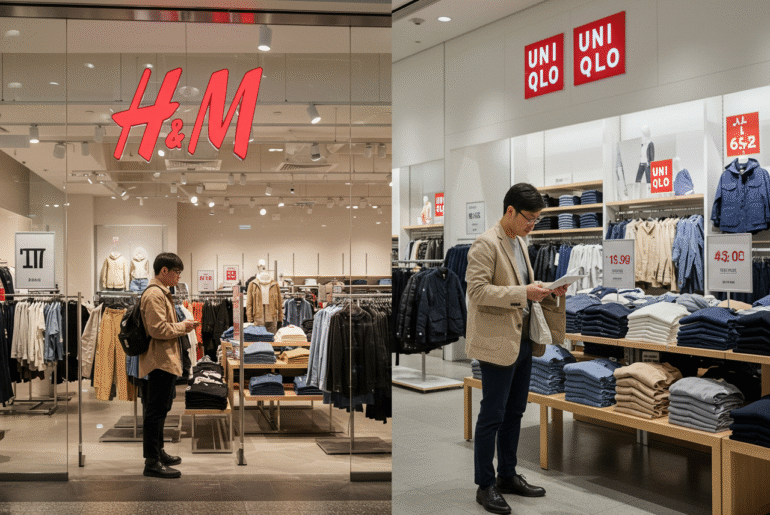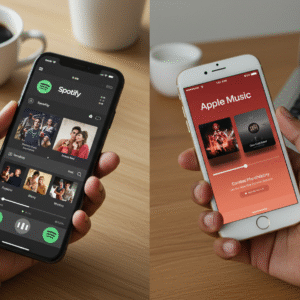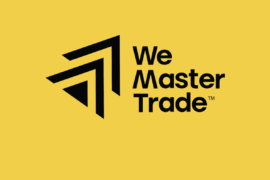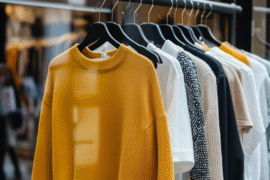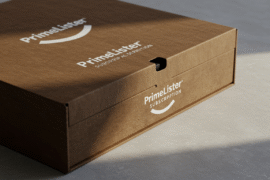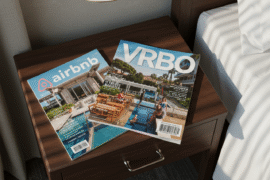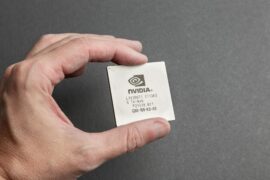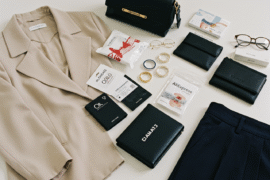This article may contain references to products or services from one or more of our advertisers or partners. We may receive compensation when you click on links to those products or services. Nonetheless, our opinions are our own.
The information presented in this article is accurate to the best of our knowledge at the time of publication. However, information is subject to change, and no guarantees are made about the continued accuracy or completeness of this content after its publication date.
- Highlights
- Introduction
- H&M vs. Uniqlo: Which Brand Delivers Superior Value for Money?
- Quality of Materials and Durability
- Range of Styles and Fashion Versatility
- Sustainability and Ethical Practices
- Customer Experience: Shopping Online and In-Store
- Loyalty Programs and Return Policies
- In-Store Ambiance and Staff Assistance
- Brand Reputation and Popularity in the United States
- Conclusion
- Frequently Asked Questions
- Recommended Reads
Highlights
- H&M and Uniqlo both serve fast-fashion consumers but differ in pricing, product quality, and design philosophy.
- H&M prioritizes affordability and trendiness, while Uniqlo focuses on timeless, functional clothing.
- Uniqlo emphasizes sustainability through durable materials and recycling programs.
- Customer experience differs in ambiance and service levels at physical store locations.
- Return policies and loyalty rewards reflect differing customer engagement strategies.
- Both brands provide wardrobe staples, but with distinct style directions and value propositions.
Introduction
H&M and Uniqlo are dominant players in the fast-fashion industry, offering affordable apparel with distinct business models. H&M is known for capturing current fashion trends, while Uniqlo emphasizes timeless basics suitable for year-round wear. Both brands have global reach and appeal but differ significantly in how they deliver value to customers. This comparison explores which brand provides better value for money by examining pricing, product quality, sustainability, style range, customer service, and more.
H&M vs. Uniqlo: Which Brand Delivers Superior Value for Money?
Although both brands cater to cost-conscious consumers, their approaches vary. H&M targets trend seekers with frequently updated collections at accessible prices. In contrast, Uniqlo offers higher-quality garments with longer durability, aiming for lasting wardrobe essentials.
Shoppers who value affordability and frequent wardrobe updates may lean toward H&M, while those seeking long-term wear and reliability may prefer Uniqlo. Ultimately, value is subjective and depends on individual style preferences and priorities.
| Feature | H&M | Uniqlo |
|---|---|---|
| Full Name | H & M Hennes & Mauritz AB | Fast Retailing Co., Ltd. (main brand) |
| Founded | 1947 | 1949 (as Ogori Shōji); Uniqlo brand 1984 |
| Country of Origin | Sweden | Japan |
| Product Focus | Fashion apparel, accessories, home goods (H&M Home), cosmetics | Casual wear, everyday essentials, innovative fabrics |
| Style/Aesthetic | Trendy, fast-fashion, diverse styles, often incorporating collaborations | Functional, high-quality basics, minimalist “LifeWear” concept |
| Business Model | Fast fashion, rapid trend adoption, large seasonal collections | “SPA” (Specialty Store Retailer of Private Label Apparel)—integrated design, manufacturing, and retail |
| Target Market | Broad, fashion-conscious consumers of all ages, including specific sub-brands for different demographics | Broad, quality-conscious consumers looking for durable, comfortable, and versatile clothing |
| Key Differentiator | Speed to market, frequent new arrivals, design collaborations with high-profile designers | Focus on fabric innovation (e.g., Heattech, AIRism, Ultra Light Down), quality basics, timeless design |
| Global Presence | Large global presence with thousands of stores across many countries | Significant global presence, rapidly expanding, particularly in Asia, North America, and Europe |
| Sustainability Efforts | Acknowledged efforts in circularity, sustainable materials, garment recycling (though still part of fast fashion) | Focus on sustainable materials, ethical production, and reducing environmental impact in manufacturing |
| Parent Company | H&M Group | Fast Retailing Co., Ltd. |
Quality of Materials and Durability
Uniqlo excels in fabric durability, using high-grade cotton and polyester blends that withstand frequent washing and daily wear. Signature products like jeans and t-shirts maintain their structure and feel even after extended use.
H&M’s quality is less consistent. Although select lines incorporate organic cotton or eco-friendly materials, the overall fabric durability varies. Lower production costs often result in garments that show wear more quickly.
For customers prioritizing long-term garment performance, Uniqlo presents a more reliable investment.
Voted "Best Overall Budgeting App" by Forbes and WSJ
Monarch Money helps you budget, track spending, set goals, and plan your financial future—all in one app.
Get 50% OFF your first year with code MONARCHVIP
Range of Styles and Fashion Versatility
Style preferences significantly influence brand choice. Uniqlo offers minimalist, season-neutral pieces in neutral tones, ideal for layering and everyday use. The brand’s focus is on timelessness and practical design.
Conversely, H&M appeals to trend-conscious shoppers, frequently introducing bold, seasonal collections with vivid colors and statement pieces. The variety caters to individuals who enjoy experimenting with new looks.
Shoppers seeking classic, adaptable clothing may favor Uniqlo, while those who enjoy fashion turnover and vibrant styles may prefer H&M.
Sustainability and Ethical Practices
Sustainability increasingly shapes consumer decisions. Uniqlo leads in this area through product longevity, eco-conscious partnerships, and recycling initiatives. The use of organic cotton and reduced-waste manufacturing processes further support its green credentials.
H&M’s “Conscious” collection aims to promote sustainability by using recycled fabrics like Tencel and polyester. However, its rapid inventory turnover and frequent product launches make true sustainability difficult to achieve.
For eco-minded consumers, Uniqlo’s consistent efforts in longevity and low-impact materials present a more authentic sustainable choice.
Customer Experience: Shopping Online and In-Store
The in-store and online shopping environments differ noticeably between the two brands. H&M stores are vibrant and trend-focused, designed to stimulate excitement with dynamic displays. Uniqlo’s locations, however, emphasize order, minimalism, and ease of navigation.
Uniqlo’s website is user-friendly and provides thorough product descriptions. H&M’s online platform is visually engaging but may occasionally lack the same level of product detail.
Those preferring a calm and organized shopping experience may gravitate toward Uniqlo, while H&M appeals to those who enjoy high-energy retail spaces.
Loyalty Programs and Return Policies
H&M features a loyalty membership that offers exclusive discounts, early access to new arrivals, and styling content. Returns are accepted within 30 days, catering to price-sensitive, trend-driven consumers.
Uniqlo does not emphasize membership programs but provides generous seasonal sales. The brand’s 60-day return window highlights its confidence in product quality and customer satisfaction.
While H&M rewards trend loyalty, Uniqlo ensures post-purchase flexibility and reliability.
In-Store Ambiance and Staff Assistance
Atmosphere and customer service contribute to the overall shopping experience. H&M stores prioritize visual engagement and fashion-forward merchandising. Staff support varies by location but tends to focus on helping customers follow style trends.
Uniqlo’s stores maintain a clean, structured layout. Staff often assist by explaining garment functionality and fit. Flagship locations emphasize customer support and product education.
For assistance and a more curated, relaxed environment, Uniqlo stores are often preferable. H&M suits those who enjoy an energetic and fashionable atmosphere.
Brand Reputation and Popularity in the United States
H&M, a Swedish brand, is widely recognized in the U.S. for trend-led designs at accessible prices. It appeals to shoppers who enjoy fast-changing fashion. Uniqlo, a Japanese retailer, offers fewer U.S. locations but focuses on high-quality basics, giving the brand an exclusive, dependable image.
Despite fewer physical stores, Uniqlo’s reputation for comfort and functionality builds strong customer loyalty.
Conclusion
Both H&M and Uniqlo offer substantial value, but in different forms. H&M is best for budget-conscious individuals seeking the latest trends. Uniqlo caters to those prioritizing quality, durability, and sustainability.
Consumers should assess their fashion goals—whether they value trendiness, garment longevity, or environmental impact. Ultimately, both brands meet different needs, making them valuable choices depending on personal priorities.
Frequently Asked Questions
Is Uniqlo considered higher quality than H&M?
Yes. Uniqlo is generally regarded as having higher-quality garments, with a focus on lasting materials and superior construction. H&M’s appeal lies in its affordability and trendiness, but the quality may not endure as long.
Are both brands suitable for everyday basics?
Yes. Both H&M and Uniqlo offer a wide range of basics, including t-shirts, pants, and tops. However, Uniqlo specializes in everyday wear with an emphasis on simplicity and durability, while H&M focuses more on trend-based items.
Which brand is more sustainable?
Uniqlo places greater emphasis on sustainability through long-lasting products and recycling initiatives. H&M has taken steps with its “Conscious” line but continues to face challenges due to its fast-fashion business model.
Where can shoppers find better deals?
H&M generally offers lower baseline prices and frequent promotions. However, Uniqlo’s seasonal sales provide excellent value for high-quality basics. Consumers can benefit from shopping strategically during sales at either retailer.

Reviewed and edited by Albert Fang.
See a typo or want to suggest an edit/revision to the content? Use the contact us form to provide feedback.
At FangWallet, we value editorial integrity and open collaboration in curating quality content for readers to enjoy. Much appreciated for the assist.
Did you like our article and find it insightful? We encourage sharing the article link with family and friends to benefit as well - better yet, sharing on social media. Thank you for the support! 🍉
Article Title: H&M vs Uniqlo: Which Brand Offers Better Value for Money?
https://fangwallet.com/2025/06/12/hm-vs-uniqlo/The FangWallet Promise
FangWallet is an editorially independent resource - founded on breaking down challenging financial concepts for anyone to understand since 2014. While we adhere to editorial integrity, note that this post may contain references to products from our partners.
The FangWallet promise is always to have your best interest in mind and be transparent and honest about the financial picture.
Become an Insider

Subscribe to get a free daily budget planner printable to help get your money on track!
Make passive money the right way. No spam.
Editorial Disclaimer: The editorial content on this page is not provided by any of the companies mentioned. The opinions expressed here are the author's alone.
The content of this website is for informational purposes only and does not represent investment advice, or an offer or solicitation to buy or sell any security, investment, or product. Investors are encouraged to do their own due diligence, and, if necessary, consult professional advising before making any investment decisions. Investing involves a high degree of risk, and financial losses may occur including the potential loss of principal.
Source Citation References:
+ Inspo
There are no additional citations or references to note for this article at this time.
